About Patricia
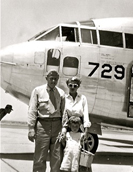
Mom and I saying goodbye to my Dad when he left for the Korean War from El Toro Marine Base California in 1952
Penguin/Random House Author Profile
I am the daughter of a Marine fighter pilot whose career took my mother, my two brothers and myself to military bases around the country, and finally to Southern California, where my Dad retired, and I attended high school and junior college. My only trip outside the United States until I was nineteen was an afternoon jaunt across the Mexican border with my family to Tijuana.
During my two years at junior college, I saved up enough money to spend a low budget summer in Europe with four girlfriends. That trip opened my eyes to three things that would influence the rest of my life: the excitement of travel, the power of being multi-lingual and the importance of documenting what I was seeing. I knew that I wanted to continue traveling, writing and learning foreign languages, but funding this wandering lifestyle was going to be a big challenge.
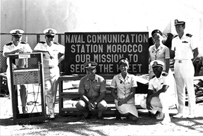
The skeleton crew at Communications Base Sidi Yahia in 1977 a few months before it was turned over to the Moroccan Army
My solution was a lifetime of national service. I spent two years in Paraguay with the Peace Corps, four years with the U.S. Navy and twenty-seven years with the Department of State, serving my country and traveling the world as a health educator, a military officer and finally a diplomat.
After graduating from Officer Candidate School, I volunteered to be one of the first two female Naval officers at a remote U.S. communications base in Morocco. I stayed for three years, traveled all over that incredible country and completed my tour of duty as the officer-in-charge during the decommissioning and handover of the base to the Moroccan Army.
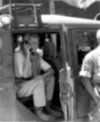
During my years in the diplomatic corps, I married a fellow diplomat, had two children, and served in Africa, Asia, Europe and the Eastern Caribbean. My last overseas assignment was as the Department of State's senior representative in northern Afghanistan from December 2004 to December 2005. It was an assignment that would change my life. I was based with a British Army Provincial Reconstruction Team in Mazar-e-Sharif, where I met with local officials and accompanied six-man military patrols into some of the most remote parts of the northern provinces. My job was to report to the U.S. Embassy in Kabul about what I was seeing and with whom I was meeting.
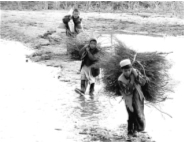
It was during that year in Afghanistan that I first became involved with the promotion of solar cooking technology. Everywhere I traveled, I saw small children being sent out of their villages to pull up bushes for their mothers’ cooking fires—children who should have been in school. I also noticed that even in the winter, there was brilliant sunshine almost every day. One cold but sunny March afternoon driving back to camp, I remembered that when I was a Girl Scout, I had built a solar oven with a cardboard box.
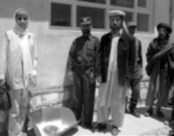
I searched for information about solar cookers on the internet, found plans on the website of Solar Cookers International, built several models out of cardboard and aluminum foil, tested them on the roof of our compound and demonstrated one several months later in a village where the soldiers and I had stopped for a meeting. The reaction of the village men to the boiling pot of water in my solar cooker was impressive. They were so intrigued by the concept that they decided to save their foil cigarette wrappers so they could make their own solar cookers!
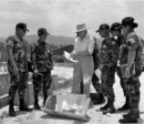
I was unable to convince the U.S. embassy to support any solar cooking projects, but I resolved to spend the first several years of my retirement writing about my experiences in Afghanistan and promoting solar cooking technology. Eventually I decided that a compelling work of fiction might give me much more latitude to explore the culture and the history of Afghanistan without compromising any of the people I had met there. James Michener’s Caravans was my inspiration, although unlike Michener, I had to have my entire manuscript cleared by the Department of State and ‘relevant agencies’. I’m happy to report that they didn’t change (or delete) a word.
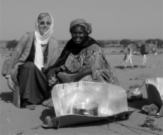
In 2007, just after I started writing Farishta, I was invited to join the boards of directors of Solar Household Energy and Solar Cookers International. I am still an active solar cooking advocate and have lectured on and demonstrated solar cookers in Washington D.C., Los Angeles, Mexico, Guyana, Honduras, India, Chad, Nepal, on the Google campus in California and on the Navajo reservation in Arizona. I plan to continue working to spread awareness of this remarkable technology.
I am equally committed to promoting the broader concepts of renewable energy and sustainable building around the world. Years ago, I read an article in Mother Earth News about a century-old method of sustainable construction. It originated in the sand hills of Nebraska and uses bales of straw. I collected videos and books on straw bale construction by Catherine Wanek and took them with me when I was assigned as Public Affairs officer at the U.S. Consulate in Johannesburg, South Africa. While there, I organized a series of tele-conferences with straw bale experts Matts Myhrman and Judy Knox for South African farmers, who were burning waste straw in their fields in a country where there was a serious shortage of building materials. I also joined an amazing organization called Builders Without Borders.
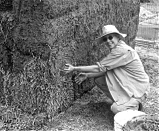
I became an active straw bale advocate, attending workshops and participating in the construction of two straw bale demonstration houses on the Mall in D.C. (‘02&’08). When I went to Afghanistan in 2004, knowing nothing about traditional Afghan building practices, I thought straw bale construction might be a useful technology for rural Afghans, since they grow and harvest their own wheat. Was I wrong! After accompanying several military patrols into the mountains, I learned that the Afghan people have developed their own beautiful, energy-efficient, and durable method of construction using mud, clay and chopped straw. It is known as ‘cob’ and has been used in many countries for hundreds if not thousands of years. I now believe we should be promoting reconstruction in Afghanistan using their own traditional building methods rather than importing cinderblocks and concrete.
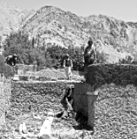
When I returned from Afghanistan, I volunteered to become a presenter with former Vice President Al Gore’s Climate Project. He trained more than 1000 of us to give public presentations about what is causing climate change and what we can do about it—transition as soon as possible from a fossil fuel based economy to one that runs efficiently and sustainably on wind, solar and other renewable energy sources. Such a move will be good for the air, the water, our health, our children and our economy.
to purchase, please visit
